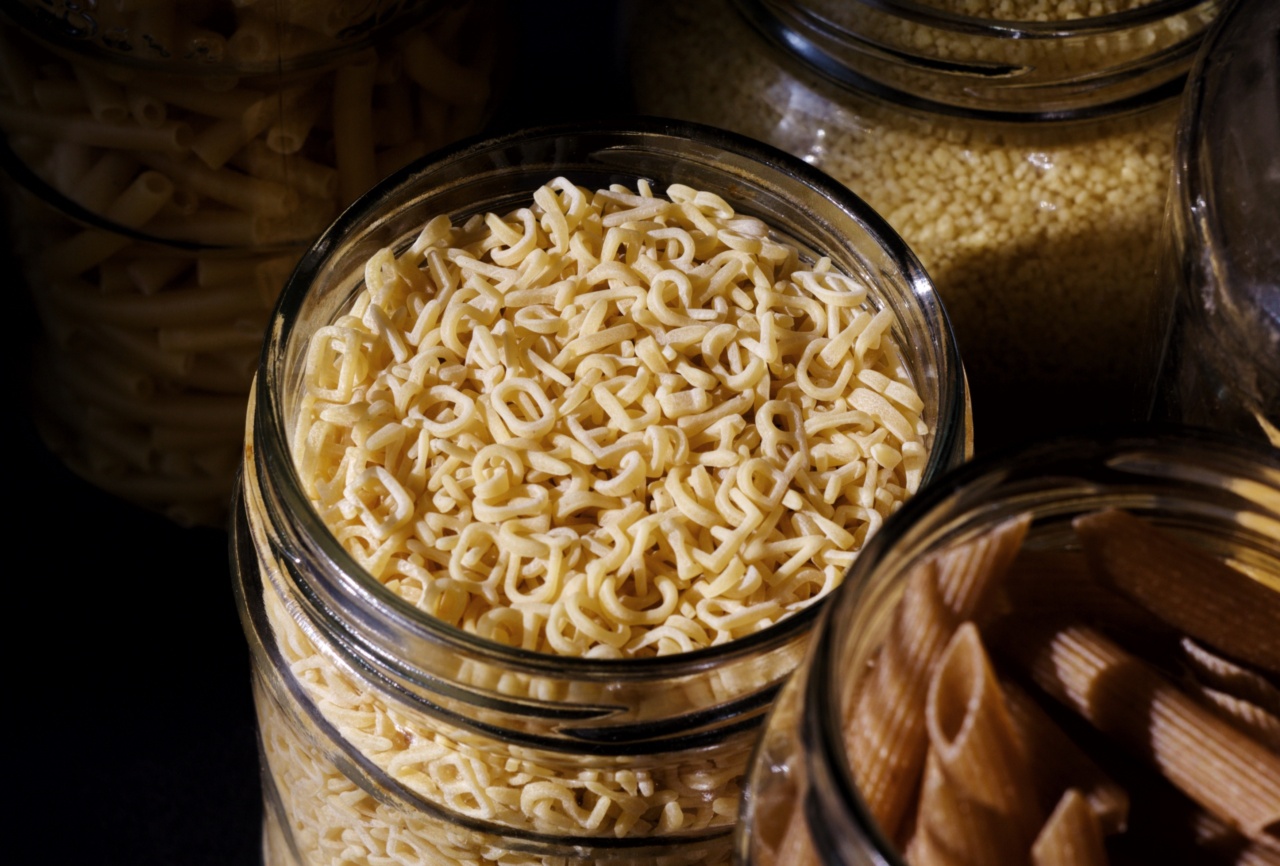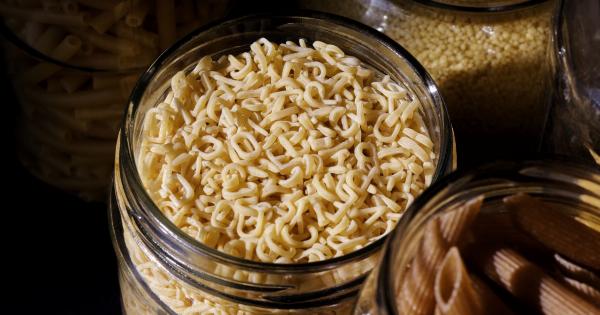Whole grain pasta has gained popularity in recent years due to its numerous health benefits and its role in supporting a balanced diet. This type of pasta is made from whole grain flour, which retains the bran, germ, and endosperm of the grain.
Unlike refined pasta that is made from white flour, whole grain pasta offers many advantages that promote better health and well-being. In this article, we will explore the truth about whole grain pasta and why it should be a staple in your kitchen.
What Makes Whole Grain Pasta Different?
The primary difference between whole grain pasta and regular pasta lies in the composition of the flour used. Whole grain pasta is made from whole wheat flour, which contains all parts of the grain, including the bran, germ, and endosperm.
On the other hand, regular pasta is typically made from refined white flour, where the bran and germ are removed, leaving only the starchy endosperm.
By retaining all parts of the grain, whole grain pasta offers several nutritional advantages over regular pasta. Whole grain pasta is higher in fiber, vitamins, minerals, and antioxidants.
The bran and germ present in whole grain pasta are rich in fiber, which aids in digestion, improves heart health, and helps maintain a healthy weight. Moreover, these components also provide essential nutrients like vitamin E, B vitamins, and minerals such as iron, magnesium, and selenium.
The Health Benefits of Whole Grain Pasta
1. Rich in Fiber: Whole grain pasta is an excellent source of dietary fiber. A single serving of whole grain pasta contains around 6 grams of fiber, compared to only 2 grams in regular pasta.
Consuming an adequate amount of fiber can aid digestion, prevent constipation, and promote a feeling of fullness, which can help with weight management.
2. Heart-Healthy: Whole grain pasta has been linked to a reduced risk of heart disease. The fiber content in whole grain pasta helps lower cholesterol levels by reducing the absorption of cholesterol in the body.
The presence of antioxidants and phytochemicals in whole grain pasta also helps protect against heart disease and inflammation.
3. Diabetes Management: Due to its higher fiber content and a lower glycemic index, whole grain pasta has a lesser impact on blood sugar levels compared to regular pasta.
This makes it a suitable choice for individuals with diabetes or those aiming to manage their blood sugar levels.
4. Weight Management: Whole grain pasta has been found to be beneficial for weight management due to its high fiber content.
The consumption of fiber-rich foods like whole grain pasta can help control appetite, promote feelings of fullness, and prevent overeating.
5. Nutrient-Rich: Whole grain pasta is packed with essential nutrients that are beneficial for overall health. It contains vitamins such as vitamin E, B vitamins (thiamin, riboflavin, niacin), and minerals like iron, magnesium, and selenium.
These nutrients are vital for energy production, immune function, and maintaining a healthy nervous system.
Choosing the Right Whole Grain Pasta
When selecting whole grain pasta, it is essential to read the labels carefully to ensure you are getting a truly whole grain product. Look for the term “100% whole grain” or “whole wheat” on the packaging.
Avoid products labeled as “multigrain” or “enriched” as they may still contain refined flour.
It is also worth noting that whole grain pasta has a slightly nuttier flavor and a firmer texture compared to regular pasta.
If you are new to whole grain pasta, you may want to experiment with different sauces and seasonings to find combinations that enhance its taste.
How to Cook Whole Grain Pasta
Cooking whole grain pasta is similar to cooking regular pasta. Follow the instructions on the packaging for the best results. However, keep in mind that whole grain pasta may require slightly longer cooking times and more water compared to regular pasta.
Here are simple steps to cook whole grain pasta:.
- Bring a large pot of water to a boil.
- Add a pinch of salt to the boiling water.
- Add the whole grain pasta and stir gently.
- Cook according to the instructions on the packaging, usually around 8-12 minutes.
- Test the pasta for doneness by biting into a piece. It should be cooked through but still have a firm texture.
- Once cooked, drain the pasta and rinse it with cold water.
- Enjoy your whole grain pasta as a base for various sauces, vegetables, or protein sources.
Incorporating Whole Grain Pasta Into Your Diet
There are numerous delicious ways to incorporate whole grain pasta into your diet:.
1. Pasta Primavera: Toss whole grain pasta with fresh vegetables such as bell peppers, zucchini, broccoli, and tomatoes. Add a light olive oil and garlic sauce for a tasty and nutritious meal.
2. Creamy Avocado Pasta: Create a creamy sauce by blending ripe avocados, lemon juice, garlic, and a touch of olive oil. Toss the sauce with whole grain pasta for a flavorful, plant-based dish.
3. Tomato and Basil Pasta: Combine cooked whole grain pasta with fresh tomatoes, basil leaves, and a drizzle of olive oil. Season with salt, pepper, and grated Parmesan cheese.
4. Mediterranean Pasta Salad: Make a refreshing pasta salad by mixing whole grain pasta, cherry tomatoes, cucumber, olives, feta cheese, and a light lemon vinaigrette.
5. Garlic and Herb Pasta: Toss whole grain pasta with sautéed garlic, mixed herbs (oregano, basil, thyme), and a sprinkle of grated Parmesan cheese.
Conclusion
Whole grain pasta is a nutritious and delicious alternative to regular pasta. Its high fiber content, along with essential vitamins and minerals, makes it a valuable addition to a healthy diet.
Whole grain pasta offers various health benefits, including improved heart health, better digestion, weight management, and diabetes control. By choosing whole grain pasta and incorporating it into your meals, you are making a positive step towards a healthier lifestyle.






























